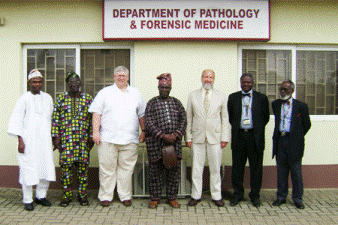Natural Resources, School of

Karl Reinhard Publications
Document Type
Article
Date of this Version
6-2014
Citation
Korean Journal of Parasitology Vol. 52, No. 3: 235-242, June 2014. http://dx.doi.org/10.3347/kjp.2014.52.3.235
Abstract
Paleoparasitology is the application of conventional or molecular investigative techniques to archeological samples in order to reveal parasitic infection patterns among past populations. Although pioneering studies already have reported key paleoparasitological findings around the world, the same sorts of studies had not, until very recently, been conducted in sufficient numbers in Korea. Mummified remains of individuals dating to the Korean Joseon Dynasty actually have proved very meaningful to concerned researchers, owing particularly to their superb preservation status, which makes them ideal subjects for paleoparasitological studies. Over the past several years, our study series on Korean mummies has yielded very pertinent data on parasitic infection patterns prevailing among certain Joseon Dynasty populations. In this short review, we summarized the findings and achievements of our recent paleoparasitological examinations of Joseon mummies and discussed about the prospects for future research in this vein.
Included in
Archaeological Anthropology Commons, Ecology and Evolutionary Biology Commons, Environmental Public Health Commons, Other Public Health Commons, Parasitology Commons


Comments
© 2014, Korean Society for Parasitology and Tropical Medicine This is an Open Access article distributed under the terms of the Creative Commons Attribution Non-Commercial License